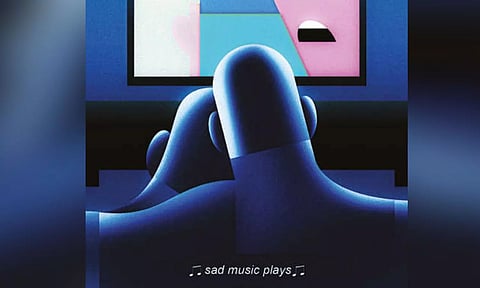

What did he just say?” Those are some of the most commonly uttered words in my home. No matter how much my wife and I crank up the TV volume, the actors in streaming movies and shows are becoming increasingly difficult to understand. We usually end up turning on the subtitles, even though we aren’t hard of hearing.
We’re not alone. In the streaming era, as video consumption shifts from movie theaters toward content shrunk down for televisions, tablets and smartphones, making dialogue crisp and clear has become the entertainment world’s toughest technology challenge. About 50 percent of Americans — and the majority of young people — watch videos with subtitles on most of the time, according to surveys, in large part because they are struggling to decipher what actors are saying.
“It’s getting worse,” said Si Lewis, who has run Hidden Connections, a home theater installation company in Alameda, Calif., for nearly 40 years. “All of my customers have issues with hearing the dialogue, and many of them use closed captions.”
The garbled prattle in TV shows and movies is now a widely discussed problem that tech and media companies are just beginning to unravel with solutions such as speech-boosting software algorithms, which I tested. (More on this later.)
The issue is complex because of myriad factors at play. In big movie productions, professional sound mixers calibrate audio levels for traditional theaters with robust speaker systems capable of delivering a wide range of sound, from spoken words to loud gunshots. But when you stream that content through an app on a TV, smartphone or tablet, the audio has been “down mixed,” or compressed, to carry the sounds through tiny, relatively weak speakers, said Marina Killion, an audio engineer at the media production company Optimus.
It doesn’t help that TVs keep getting thinner and more minimal in design. To emphasize the picture, many modern flat-screen TVs hide their speakers, blasting sound away from the viewer’s ears, Mr. Lewis said.
There are also issues specific to streaming. Unlike broadcast TV programs, which must adhere to regulations that forbid them from exceeding specific loudness levels, there are no such rules for streaming apps, Killion said.
That means sound may be wildly inconsistent from app to app and program to program — so if you watch a show on Amazon Prime Video and then switch to a movie on Netflix, you probably have to repeatedly adjust your volume settings to hear what people are saying. “Online is kind of the wild west,” Killion said.
Subtitles are far from an ideal solution to all of this, so here are some remedies — including add-ons for your home entertainment setup and speech enhancers — to try. Decades ago, TV dialogue could be heard loud and clear. It was obvious where the speakers lived on a television — behind a plastic grill embedded into the front of the set, where they could blast sound directly toward you.
Nowadays, even on the most expensive TVs, the speakers are tiny and crammed into the back or the bottom of the display.
“A TV is meant to be a TV, but it’s never going to present the sound,” said Paul Peace, a director of audio platform engineering at Sonos, the speaker technology company based in Santa Barbara, Calif. “They’re too thin, they’re downward and their exits aren’t directed at the audience.”